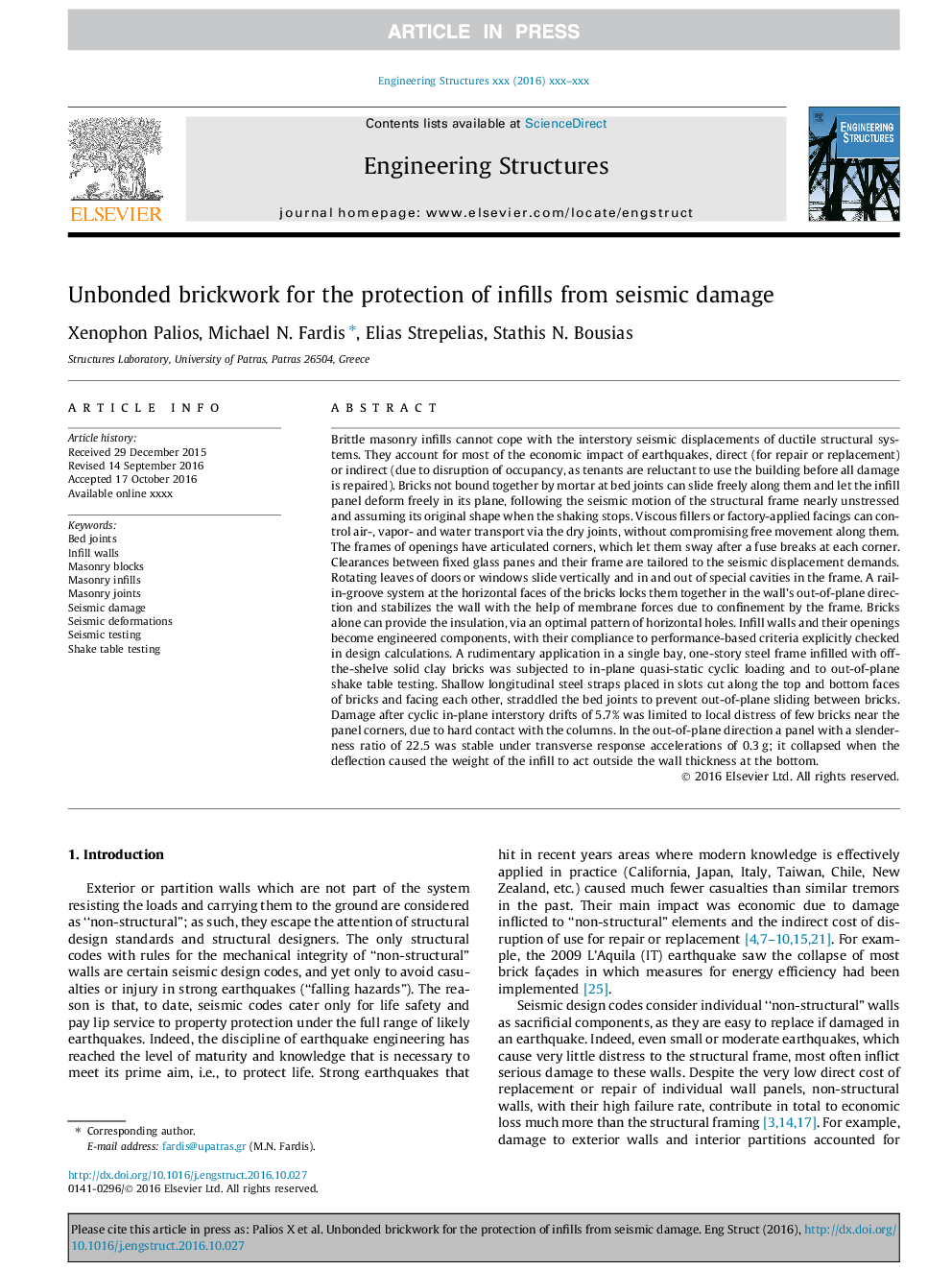| کد مقاله | کد نشریه | سال انتشار | مقاله انگلیسی | نسخه تمام متن |
|---|---|---|---|---|
| 4920622 | 1429096 | 2017 | 11 صفحه PDF | دانلود رایگان |
عنوان انگلیسی مقاله ISI
Unbonded brickwork for the protection of infills from seismic damage
ترجمه فارسی عنوان
آجری بدون بند برای محافظت از آسیب های لرزه ای
دانلود مقاله + سفارش ترجمه
دانلود مقاله ISI انگلیسی
رایگان برای ایرانیان
کلمات کلیدی
مفاصل تخت دیوارهای تزئینی، بلوک مصالح، مصالح ساختمانی، مصالح ساختمانی، آسیب لرزه ای، تغییرات لرزه ای، تست لرزشی تکان دادن تست جدول،
موضوعات مرتبط
مهندسی و علوم پایه
علوم زمین و سیارات
مهندسی ژئوتکنیک و زمین شناسی مهندسی
چکیده انگلیسی
Brittle masonry infills cannot cope with the interstory seismic displacements of ductile structural systems. They account for most of the economic impact of earthquakes, direct (for repair or replacement) or indirect (due to disruption of occupancy, as tenants are reluctant to use the building before all damage is repaired). Bricks not bound together by mortar at bed joints can slide freely along them and let the infill panel deform freely in its plane, following the seismic motion of the structural frame nearly unstressed and assuming its original shape when the shaking stops. Viscous fillers or factory-applied facings can control air-, vapor- and water transport via the dry joints, without compromising free movement along them. The frames of openings have articulated corners, which let them sway after a fuse breaks at each corner. Clearances between fixed glass panes and their frame are tailored to the seismic displacement demands. Rotating leaves of doors or windows slide vertically and in and out of special cavities in the frame. A rail-in-groove system at the horizontal faces of the bricks locks them together in the wall's out-of-plane direction and stabilizes the wall with the help of membrane forces due to confinement by the frame. Bricks alone can provide the insulation, via an optimal pattern of horizontal holes. Infill walls and their openings become engineered components, with their compliance to performance-based criteria explicitly checked in design calculations. A rudimentary application in a single bay, one-story steel frame infilled with off-the-shelve solid clay bricks was subjected to in-plane quasi-static cyclic loading and to out-of-plane shake table testing. Shallow longitudinal steel straps placed in slots cut along the top and bottom faces of bricks and facing each other, straddled the bed joints to prevent out-of-plane sliding between bricks. Damage after cyclic in-plane interstory drifts of 5.7% was limited to local distress of few bricks near the panel corners, due to hard contact with the columns. In the out-of-plane direction a panel with a slenderness ratio of 22.5 was stable under transverse response accelerations of 0.3Â g; it collapsed when the deflection caused the weight of the infill to act outside the wall thickness at the bottom.
ناشر
Database: Elsevier - ScienceDirect (ساینس دایرکت)
Journal: Engineering Structures - Volume 131, 15 January 2017, Pages 614-624
Journal: Engineering Structures - Volume 131, 15 January 2017, Pages 614-624
نویسندگان
Xenophon Palios, Michael N. Fardis, Elias Strepelias, Stathis N. Bousias,
